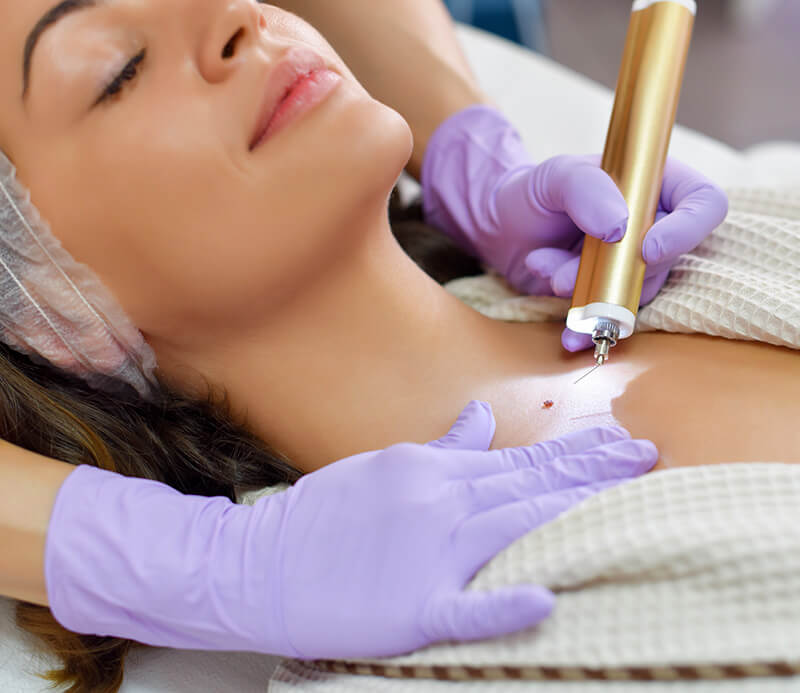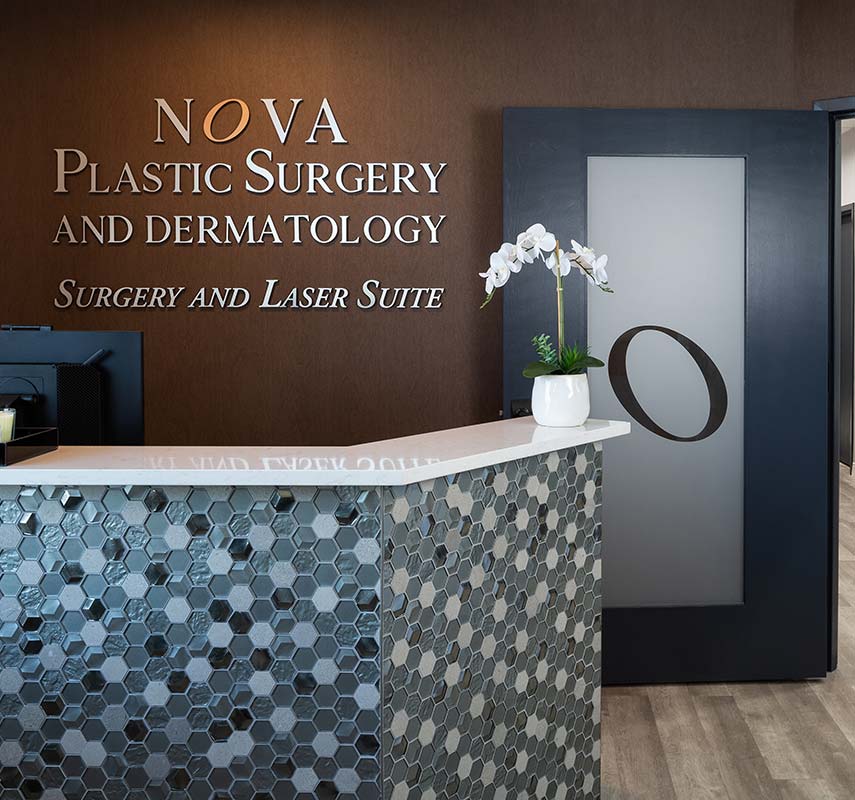
Mole Treatments
in NOVAThe key to keeping your skin healthy is to find and address the most serious problems before they get out of control. This is particularly important when it comes to skin lesions. While lesions are often benign, they can also be early signs of skin cancer. The better you are at telling the difference between lesions that are cancerous and those that will do no harm, the easier it will be to catch cancer early and stop it from spreading.
Schedule a Consultation
In order to tell the difference between benign and cancerous skin lesions, it is first necessary to distinguish the different types of lesions that a person might develop.
Lesions usually come in two forms, namely:
- Moles – By far the most widely recognizable type of lesion, moles are small spots on your skin that can be either flat or raised. Moles are usually black or dark brown in color, but can also be yellow, red, or pink. They often change in both color and shape over the course of your life. While most moles are benign, they can become cancerous. This makes it critical to keep an eye on them, with particular vigilance towards, especially large ones.
- Actinic Keratosis – Like moles, this type of lesion comes in multiple colors, with red, pink, and brown being the most common. Unlike moles, however, these lesions tend to have a crusty texture, as they result from sun damage. They are far less likely to be benign, which is why we recommend removing them as soon as you find them. Otherwise, there is a high chance that they will develop into cancer.

You must thus learn how to tell the difference between a mole that has become or is likely to become cancerous and one that is benign. This means looking out for:
- Large Lesions – The smaller the mole, the less likely it is to become cancerous. Typically, if the lesion is no larger than an eraser or a No. 2 pencil, it is unlikely to become a problem, though you should still keep an eye on it. If you have moles that are larger than this, however, we recommend that you let us take a look at them.
- Irregular Edges – Pay attention to the perimeter of the mole. If it is blurred, ragged, or otherwise irregular, it is more likely to become cancerous.
- Lesion Location – Moles in certain locations are more likely to become cancerous than others. For women, the most common spot for skin cancer is the lower leg; for men, it is the back. You should thus pay particular attention to any moles that appear in these areas.
- Color Changes – If your mole changes in color, it is more likely to be cancerous. The risk of cancer is also raised if the mole contains multiple different colors at once.
- Shifts in Shape – As with color, changes in the shape and size of your mole indicate a potentially deadly problem.
- Pus, Blood, & Pain – A mole that cracks, bleeds, or oozes pus is likely to be cancerous, as are moles that are highly painful.
Even if it does not meet any of these risk factors, you should always be wary of new moles that you discover on your skin. Melanoma, the most serious form of skin cancer, does not always conform to the same characteristics, but always presents a serious threat to your health and your life. We are thus happy to examine moles of any size, shape, or color, along with actinic keratosis spots, as soon as you report them.
Skin cancer is nothing to take lightly, which is why we are as comprehensive as we can be when examining and eliminating skin lesions. Our procedure for moles and keratosis involves every possible precaution, including:
- Initial Examination – We begin by cleaning and examining the mole or keratosis spot on our own so that we can corroborate your observations. We clean the lesion carefully and look over it in detail, lowering the risk that we will fail to catch a sign of cancer.
- Skin Biopsy – If the initial examination is inconclusive or indicates you are likely to have cancer, we perform a skin biopsy. This involves sampling the lesion to determine its depth and composition. In this way, we can known for sure whether the mole or spot is cancerous, as well as how widespread the problem has become if it is.
- Lesion Removal – If we determine that the lesion is cancerous, or if it isn’t but you still want to get rid of it, our specialists know how to do so quickly, safely, and effectively. We offer safe and effective mole removal using two common techniques: shave excision, where the mole is carefully shaved down to skin level, and punch excision, which involves removing the mole with a small, circular tool that excises it entirely. The method used depends on the size, depth, and location of the mole.
- Follow Up on Healing – After you have had your lesion or lesions removed, we will inform you in detail on how to take care of your skin as it heals. It is common to experience some mild pain, swelling, and discoloration in the affected area for a few weeks after the procedure. We will let you know what side effects are normal and which ones require further medical attention. We also may recommend that you schedule additional appointments so that we can make sure you are healing according to plan.
You also should not have collagen injections or chemical peels any less than two weeks prior to the treatment. In the days before the procedure, you should avoid putting on deodorant or perfume, as well as taking aspirin, blood thinners, and anti-inflammatory drugs. All of these can complicate the treatment, with potentially dangerous consequences.
After lesion removal, your skin will likely be more sensitive, making it essential to avoid sun exposure for at least a month. You also need to clean the affected area gently but comprehensively to reduce the risk of infection. If we apply any dressings or ointments, you must change them according to our specific instructions. We may also prescribe you painkillers and steroids; take these exactly as we instruct you to.
Beyond these tips for lesion removal, it’s also important to know how to live with lesions. Whether you have chosen not to get a lesion removed or simply have to wait a few weeks to get rid of it, be sure to practice proper lesion care, which involves:
- Regular Cleaning – Make sure to gently wash and moisturize the lesion and surrounding skin on a daily basis. Not only will this reduce your risk of developing any health problems there, but it also keeps the area clearer so that you can more quickly identify signs of cancer when they arise.
- Sun Shielding – Keep your lesions covered whenever you go out in the sun, and make sure to apply sunscreen. This is particularly important if you have light or sensitive skin. The less sun exposure you allow them to get, the lower the chance that your lesions will become cancerous.
- Picking Prevention – Never scratch or pick at your lesions. Not only will this cause pain, but it also raises the risk that the lesion and surrounding skin could become infected.
- Consistent Attention – Even if a mole appears benign, never let your guard down. The more closely you watch it for signs of change, the sooner you will be able to seek treatment. Likewise, if you have a mole or keratosis spot that you plan to have removed, watch it during the days leading up the appointment. If it changes, let us know, as this may affect how we need to treat it.
No matter the nature of your lesions or what you choose to do with them, we are committed to offering safe, effective care tailored to each of our patients. By paying attention to your specific health history and needs, we ensure your skin is clean and cancer-free under all conditions.
